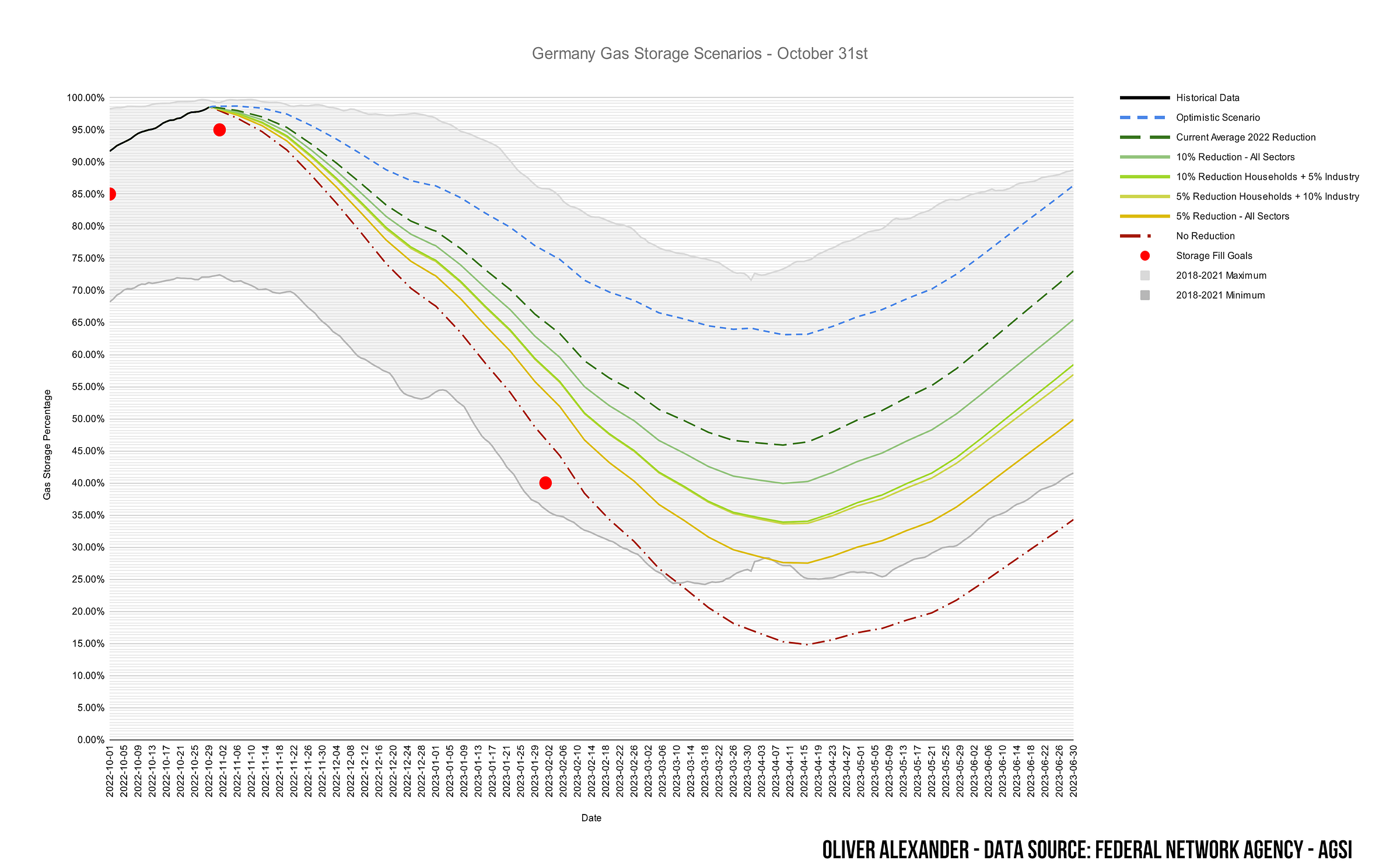Gas Storage Scenario Update 31.10.22
It is the end of October and things are looking better than ever for German natural gas storage
We have reached the end of October and German natural gas storage levels remain well above the mandated goals. The mandated goal of 95% fill level on November 1st is on track to be beaten by quite a margin. Latest fill data puts levels at 98.52% on Saturday 29th October. Sundays usually result in a large injection into the storage facilities, as industry gas requirements fall in over the weekend. I would not be surprised if levels reach 99% on November 1st.
The unusually warm weather for this period of Autumn across Europe has continued to aid Germany and destroy Putin’s plans for a freezing Europe this winter. It seems that even the weather gods hate Putin.
This brings me to my updated model below:
As it looks now, even normal gas consumption in Germany will not completely expend the gas stores, though would put winter 2023 into a more precarious position. With current levels of imports, it is hard to imagine a scenario where Germany runs out of gas this winter unless gas infrastructure is sabotaged.
All other scenarios manage to keep Germany within the minimum fill level they reached in the period 2018-2021.
If Germany maintain their current average savings since the beginning of the invasion of Ukraine, they should bottom out just under 50% at the beginning of April.
There is as always a large amount of uncertainty due to the unpredictability of winter. While it is impossible to accurately predict the weather this far into the future, there are currently no indications that this winter will be cold one. Most data from weather and climate scientists points to a milder than normal winter.
For this update I added a new very optimistic scenario, a best case. This scenario requires Germany to continue down the path it currently is in recent weeks in regards to gas savings. Attempting to adjust for the temperature, German households and businesses have saved around 22% gas compared to the 4 year average. At the same time German industry, which is less affected by weather and has a more stable gas consumption, has saved around 18%. For the optimistic scenario I have accounted for this, with a decrease in savings to 10% for households and 5% for industry from the beginning of April as the winter passes.


